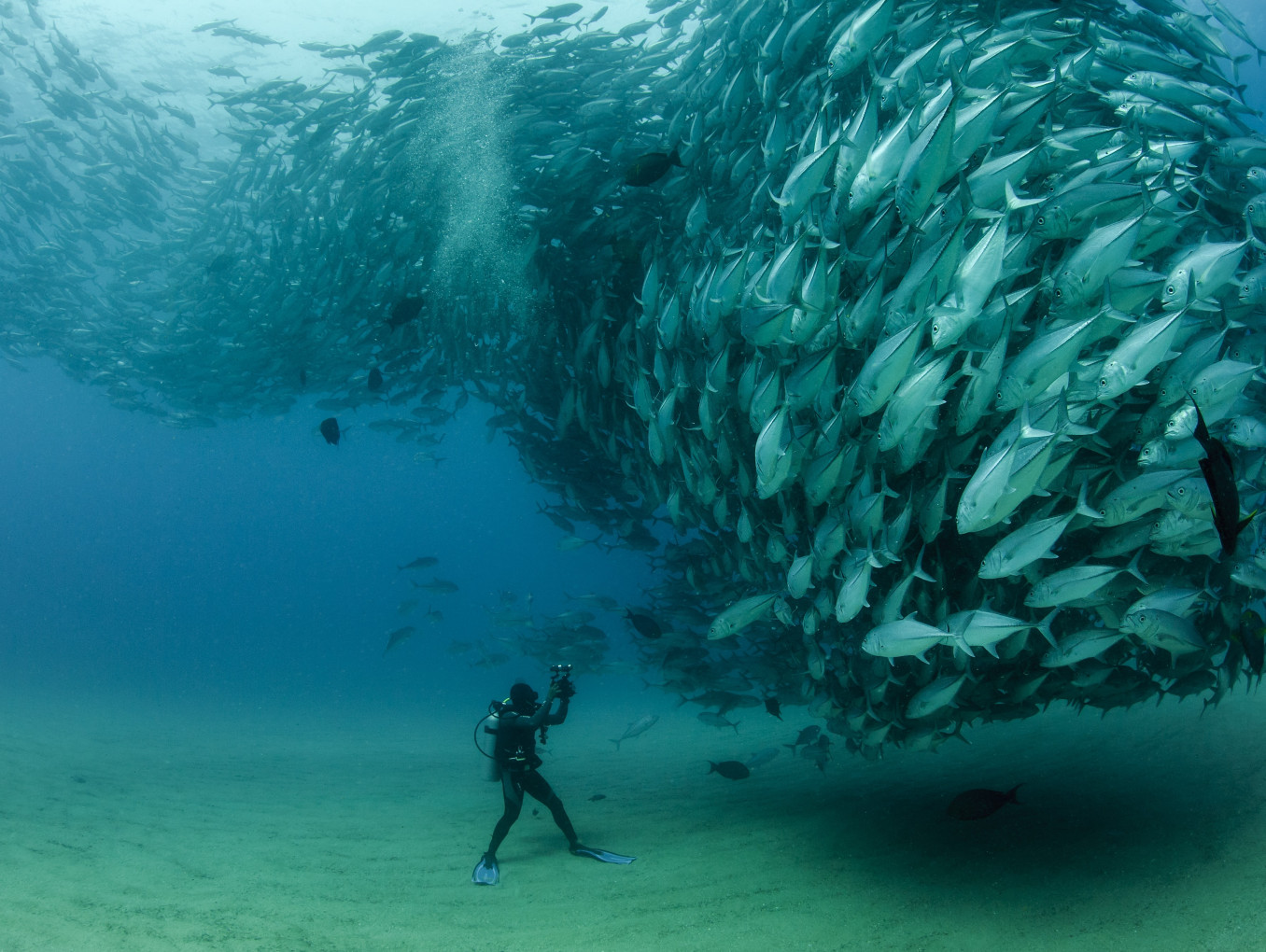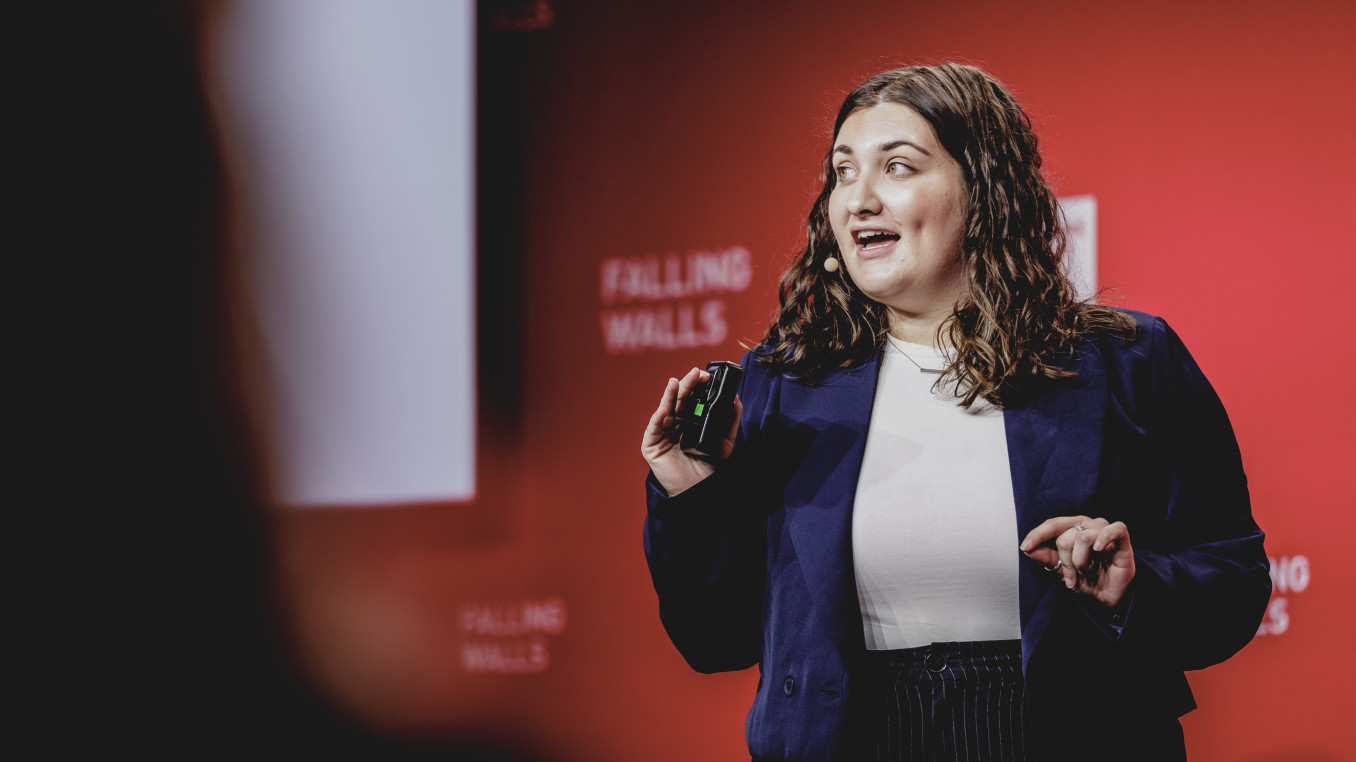Breaking the Wall of Marine Conservation Limits
Breaking the Wall of Marine Conservation Limits
Global Call 2025 Finalist Interview: Social Sciences & Humanities
Octavio Aburto is a Full Professor at Scripps Institution of Oceanography (SIO), a professional photographer associated with the International League of Conservation Photographers and a National Geographic Explorer. Octavio obtained his PhD at the Center of Marine Biodiversity and Conservation at SIO and was awarded the Jean Fort Award by the University of California, San Diego, for his significant contribution to an issue of public concern through his doctoral research. He is part of the PEW Marine Fellows since 2019, and his research and photographs have focused on marine reserves and commercially exploited marine species and their fisheries in several countries.
Which wall does your research or project break?
Marine Prosperity Areas (MPpAs) break the wall between ecological conservation and human development. For decades, marine protection has relied on the assumption that healthy ecosystems will eventually lead to healthy communities. However, this timeline mismatch—where ecosystems recover over decades while communities face immediate economic hardship—has led to scepticism, resistance and failed implementation, especially in regions where livelihoods depend directly on marine resources. Traditional Marine Protected Areas (MPAs) often exclude local voices, neglect equity and lack financial sustainability, becoming “paper parks” with limited impact.
The MPpA framework breaks through these barriers by reframing marine conservation as a driver of prosperity rather than a restriction. It integrates science, governance and finance to build a model where conservation is participatory, inclusive and economically viable. MPpAs are designed with communities, not for them, ensuring that social well-being, education, governance and economic opportunity are part of the conservation process from day one.
We also break the wall between environmental science and real-world investment. By connecting marine restoration with innovative financing tools like blue bonds, impact investing and blended finance, MPpAs de-risk conservation and attract capital that can sustain marine protection beyond donor cycles.
In essence, MPpAs challenge the outdated notion that protecting nature means sacrificing development. They show that with the right framework, we can regenerate ecosystems and empower communities simultaneously—and do so in a way that is scalable, measurable and enduring.
What is the main goal of your research or project?
The main goal of the Marine Prosperity Areas (MPpAs) project is to transform marine conservation into a force for equitable and lasting human prosperity. While ecological protection remains at the core, MPpAs are designed to ensure that communities don’t have to wait decades to experience the benefits of conservation. Instead, the framework incorporates immediate and strategic interventions—education, alternative livelihoods, local governance and financial inclusion—to bridge the time gap between ecosystem recovery and economic development.
Our goal is to establish 10 MPpAs in 10 years in collaboration with 100 communities in the Gulf of California, creating a replicable model for the world. Each MPpA is developed through a participatory process that empowers local stakeholders to define what prosperity means for them—whether that’s food security, job creation, youth education, cultural revitalisation or gender equity—and co-design pathways to achieve it.
We also aim to embed financial sustainability into conservation. Using science-diplomacy efforts, we align public, private and philanthropic capital with measurable conservation and social goals. This ensures that marine protection is not only ecologically sound but economically viable over the long term.
Ultimately, our work redefines success in marine conservation. It’s not just about species counts or hectares protected—it’s about how well ecosystems and communities recover together. The MPpA framework is a call to action: to stop treating environmental protection and human well-being as competing priorities and start building systems where they reinforce one another.
What advice would you give to young scientists or students interested in pursuing a career in research, or to your younger self starting in science?
If I could speak to my younger self—or to any young scientist just beginning—I would say: never underestimate the power of interdisciplinary thinking, humility and storytelling.
Science is not just about discovering new things; it’s about making those discoveries matter to others. Early in my career, I focused on data, papers and methods—but over time, I learned that even the most rigorous research can be ignored if it doesn’t connect with people’s values, needs and dreams. So, my advice is: learn to listen—especially to communities, to non-scientists, young leaders and to those from other disciplines. Real innovation often happens in those spaces where fields overlap, and worldviews meet.
I’d also say: be stubborn about your vision, but flexible about your methods. If a path doesn’t work, adapt—but don’t lose sight of why you started. I began my journey studying fish species, biomass and trophic dynamics in rocky reefs. At 25, I published a paper in Science and naively believed I had secured the future of the Gulf of California. I was completely wrong. Twenty-five years later, I’ve learned that while science is powerful, it only truly transforms lives when it is done with communities. They must lead. Our role as scientists is to listen, to support and to help reimagine conservation as a path to prosperity—not restriction. That’s what has kept me in this work: the realisation that ecosystems and people can recover together, if we build trust and design solutions from the ground up.
Finally, remember that science is a long game. Progress is not always linear. There will be failures, doubts and moments when you question your purpose. In those moments, surround yourself with people who believe in you, and never lose your curiosity. It's important to stay open and reinvent yourself continuously.
What inspired you to be in the profession you are today?
Seeing the beauty and fragility of marine life as a young college student in the Gulf of California inspired me to become a scientist—but it was witnessing how science could empower coastal communities that gave my work real meaning.
What impact does your research or project have on society?
Marine Prosperity Areas narrative is transforming marine conservation into a driver of human well-being—ensuring that protecting the ocean also means creating jobs, strengthening communities and securing a sustainable future.
What is one surprising fact about your research or project that people might not know?
The MPpA narrative is so compelling that it inspired the creation of Sailing for Prosperity—a sailing expedition designed to raise awareness and funds by visiting coastal communities and showcasing how ocean conservation can become a path to local prosperity.
What’s the most exciting moment you've experienced over the course of your research or project?
One of the most exciting moments was standing on the beach in Cabo Pulmo, nearly 30 years after the community helped establish the marine reserve and realizing that both fish biomass and local prosperity had grown beyond what we ever imagined.


